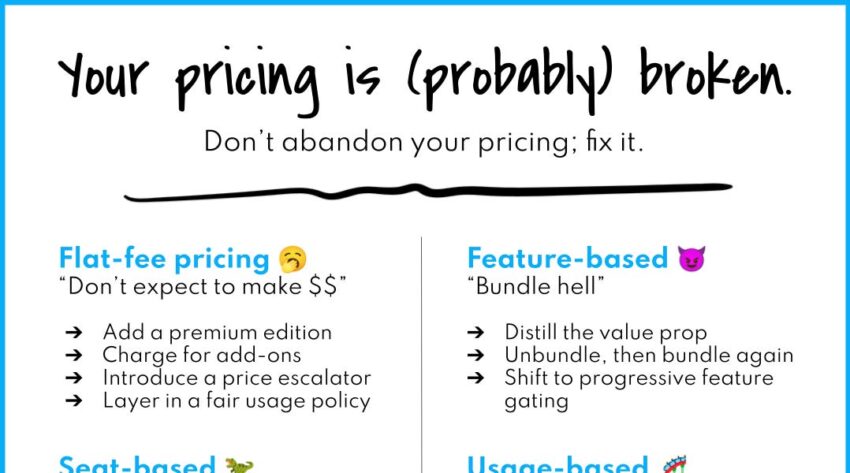TL;DR Summary of How AI is Rewriting SaaS Monetization: Practical Pricing Fixes for Founders
Optimixed’s Overview: Navigating the Complex Landscape of SaaS Pricing for Scalable Growth
Understanding the Pricing Challenges in Modern SaaS and AI Companies
In conversations with dozens of SaaS founders, a recurring theme is pricing uncertainty and embarrassment. Despite knowing their models aren’t optimized, many hesitate to innovate due to fear of complexity or alienating customers. The evolving landscape includes traditional seat-based models, usage-based pricing, hybrid approaches, and emerging outcome-based models — each with its own trade-offs.
Common Pricing Models and Their Pitfalls
- Flat-fee subscriptions: Simple and predictable but can price out small customers and underserve large ones, limiting expansion revenue.
- Good-Better-Best tiering: Widely adopted but often confusing, leading customers to default to the middle plan and hindering tailored feature adoption.
- Seat-based pricing: Still relevant but challenged by AI-driven headcount reductions and inconsistent user value, risking artificial revenue caps.
- Usage-based pricing: Offers flexibility but can be hard to forecast and may discourage usage growth due to cost concerns.
- Hybrid pricing: Combines models but often adds complexity and opacity, complicating customer understanding and internal management.
- Outcome-based pricing: Attractive in theory but difficult to measure, prone to disputes, and unpredictable for both parties.
Practical Action Items to Improve SaaS Pricing
- Expand revenue levers: Add premium editions, charge for valuable add-ons, implement price escalators, and enforce fair usage policies.
- Clarify packaging: Simplify plan messaging, unbundle and selectively re-bundle features, and offer progressive feature gating to entice upgrades.
- Redefine seat pricing: Introduce lite user tiers, set minimum user counts for plans, and test usage paywalls to balance revenue and value.
- Improve usage-based models: Train sales teams to forecast usage linked to ROI, realign compensation, increase usage transparency, and consider adaptive subscription models.
- Simplify hybrid pricing: Use unified credit systems, reduce the number of billable actions, and customize bundles by customer segment.
- Make outcome-based pricing manageable: Align on outcome definitions upfront, offer performance guarantees, combine platform fees with bonus incentives, and provide pricing model choices to customers.
Final Thoughts
There is no perfect pricing model. The best approach is one that clearly communicates your unique value, resonates with your customer base, and includes a thoughtful plan to navigate and fix inevitable pricing challenges. Instead of abandoning broken pricing, founders should embrace continuous improvement to drive sustainable growth.
